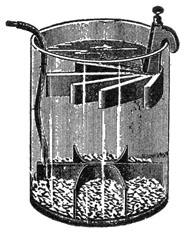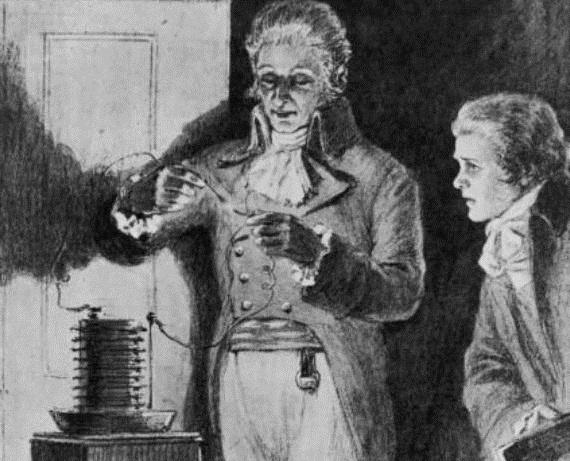Ever wonder how our 19th-century ancestors maintained a strangely effective telegraph and telephone grid long before the days of highly efficient batteries? The short answer is that they did it through brute force and ingenuity. The long answer is something far more glorious, and even something the modern homesteader could draw inspiration from to create power for recharging small electronics or – in the event of a crisis — running low-power objects.
Now, don’t get me wrong: There is absolutely zero rational reason to recreate these old 19th-century batteries unless you have absolutely no other choice. You are best to stockpile modern-day batteries, solar chargers and survival gadgets, but there may come a time when any sort of cobbled-together battery is the best choice you can make.

Called a “crow’s foot” battery (or gravity battery) for the shape of its zinc electrodes, these batteries had a star-shaped copper base connected to a wire which created the positive voltage. The whole thing was installed in a large glass jar, full of copper sulfate as an electrolyte. Now so far, a clever prepper or survivalist should be able to scrounge the copper and zinc to make the electrodes, and the glass jar to put them in. But the copper sulfate solution may be harder to come by, although under the name “blue vitriol” it is sometimes sold to provide copper nutrients in animal feed and as an algae killer for pools. You may be able to scavenge that, or if you have access to about 6 volts DC, and sulfuric acid, there are means to make it through electrolysis. Clearly if you expect to survive through a societal collapse, it may be a rather good idea to either have a chemical stockpile before the government puts common chemicals on a watchlist, or make good friends with a chemist who knows how to make things from scratch.
Get Free Backup Electricity — That Works Even During Blackouts!

But let us assume then that you’ve managed to come up with the ingredients for our ancestral battery. Just what can you do with it?
The early telegraph grid used batteries arranged in parallel, using a great many of these roughly 1.5- to 2-volt batteries to maintain the circuit. This array of batteries could be built on to provide sufficient amperage to transmit the telegraph, and later telephone signal over such distances as may be required. They were bulky, leaked electrolyte as they were discharged, and in general were somewhat messy. They were usually placed on a wooden table, with glass battery rest insulators underneath to provide insulation for the battery and also to catch some of the spilled electrolyte. All told, these batteries were crude, yet highly effective.
Coming back to the modern era, or an unpleasant future where you want to charge your small electronics or have some sort of power system for communication, creating these crude 19th century marvels will require dedication. But just what can you do with them?
Story continues below below

It really depends on how many you can make. Each battery is fairly low voltage and low amperage, and their output depends on the freshness and quality of the electrolyte as well as the quality of the electrodes. You will need a good mulitmeter to check voltage and amperage for each battery you manage to assemble. Personally, I think the primary value of these batteries is less in being able to charge up your pre-collapse iPhone (solar chargers do it much, much better) and more to run some sort of communication array.
Crazy Survival Gadget Makes Every Window A Powerful Solar Charger
If you get enough batteries going, you can connect them in series to run a low-power radio, or you can run them in parallel for your own telegraph or landline telephone system. They also have value in keeping low-draw LED lights on or as a supplemental source of power for other systems. Because of their large size, these batteries have a long life span, and if you are skilled enough to make them, you can salvage many valuable materials from them at the end of their life cycle to aid in making another battery.
These things are great if you have access to copper, zinc and sulfuric acid, and from there, the output of these batteries is limited only by your resources. I think they work best for providing low-voltage application in parallel, which could be used to maintain small electronics and rechargeable battery packs in a pinch, but I would focus most on using them to make your own communication grid as they were once intended.
The stark reality is that batteries are messy, and nothing can replace a stockpile of solar-powered products — or even a solar-powered generator. Still, it is good to be prepared for all circumstances. We have become culturally dependent on a myriad of electrical devices, and some of those devices can be crucial for communication during a collapse. If you have the ability to add obsolete skills to your skillset, then learning the batteries of the past may become a literal lifesaver.
What advice would you add? Share it in the section below:












